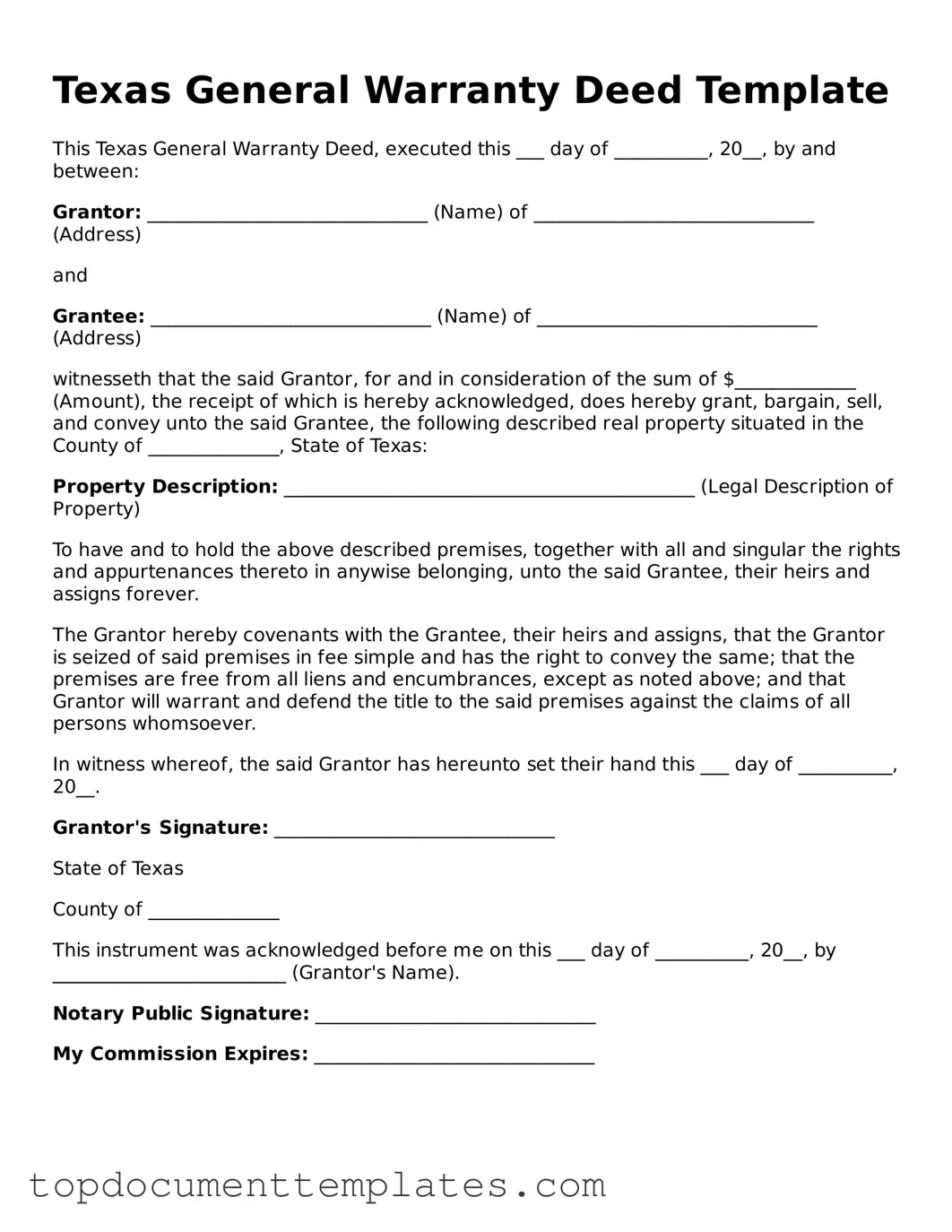The Texas Deed form is a crucial document in real estate transactions, serving as the legal instrument that transfers property ownership from one party to another. It encapsulates essential details such as the names of the grantor and grantee, a description of the property being conveyed, and any conditions or restrictions that may apply to the transfer. This form can vary depending on the type of deed being utilized, such as a warranty deed, quitclaim deed, or special warranty deed, each serving different purposes and offering varying levels of protection to the parties involved. Additionally, the Texas Deed must be executed with specific formalities, including notarization and, in some cases, the presence of witnesses, to ensure its validity. Understanding these components is vital for anyone involved in a property transaction in Texas, as improper execution or lack of required information can lead to legal complications down the road. Whether you are a buyer, seller, or real estate professional, familiarity with the Texas Deed form is essential for a smooth and legally sound property transfer.
